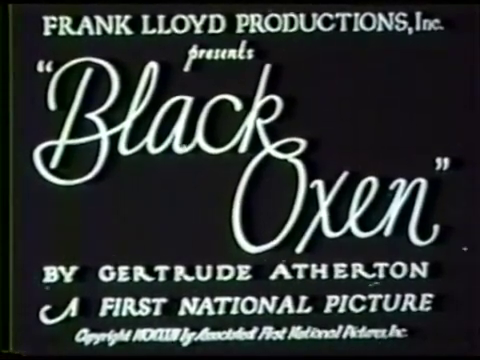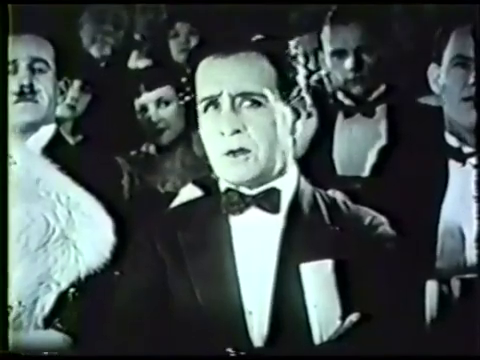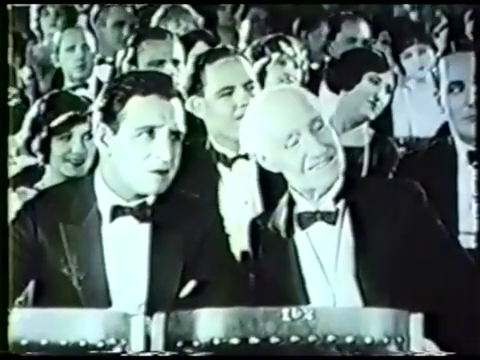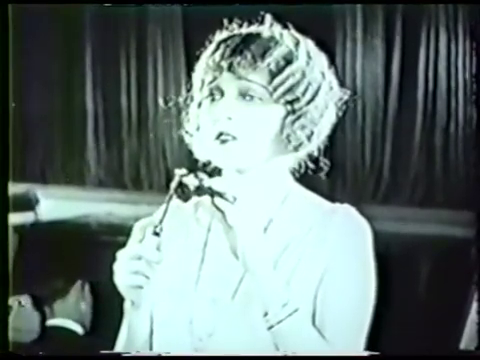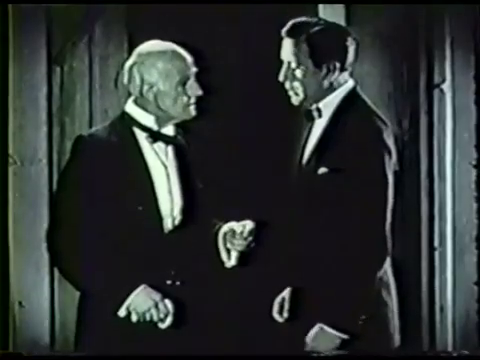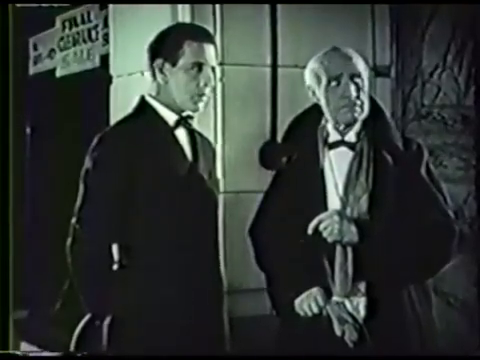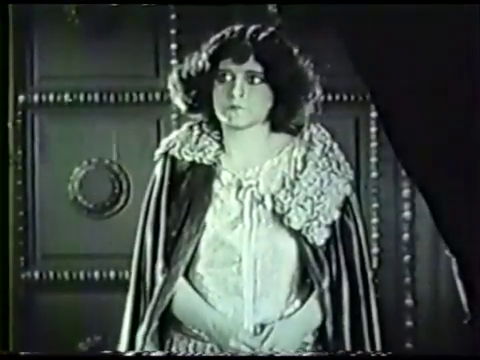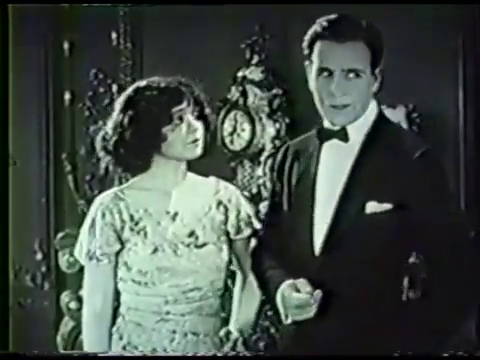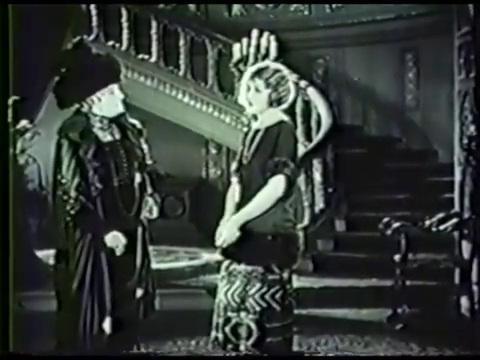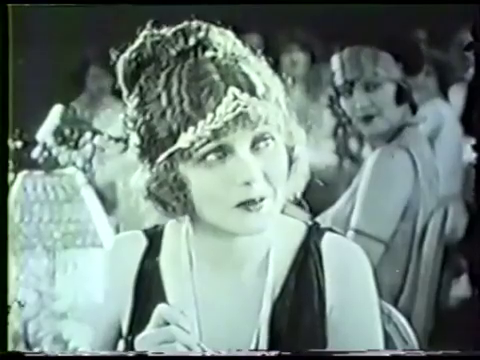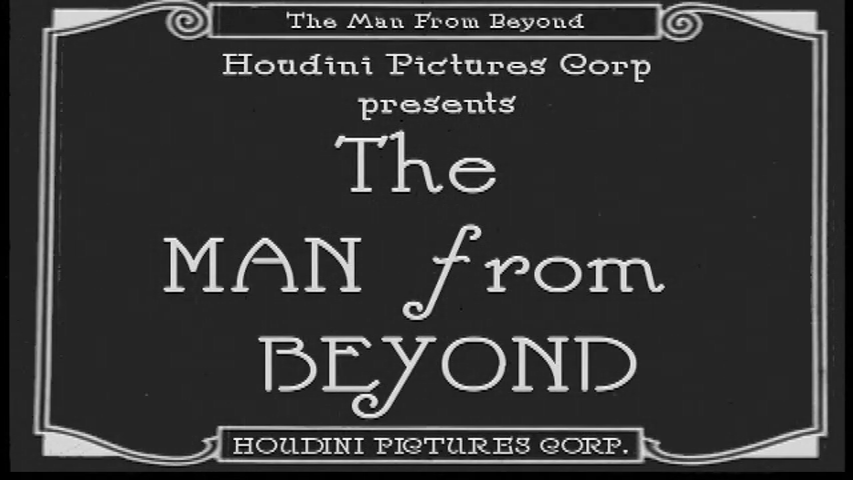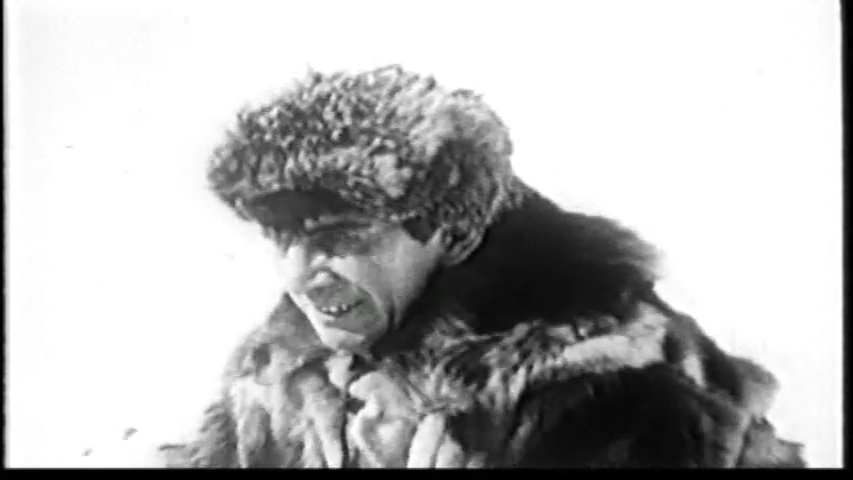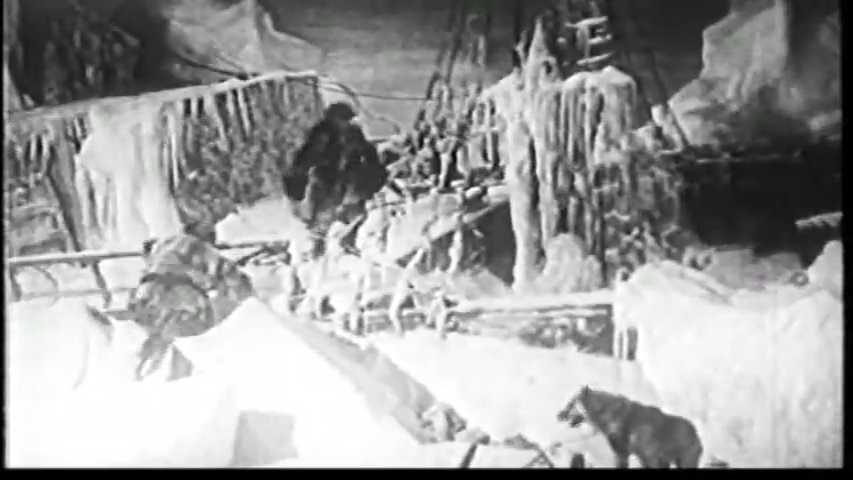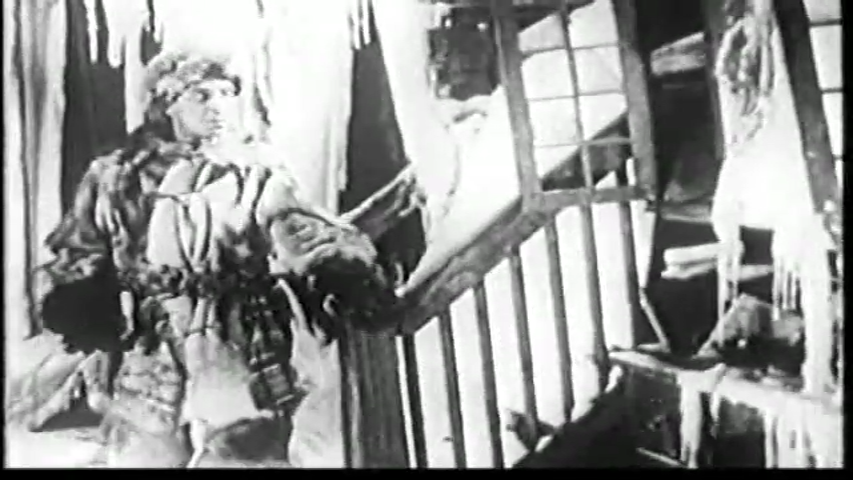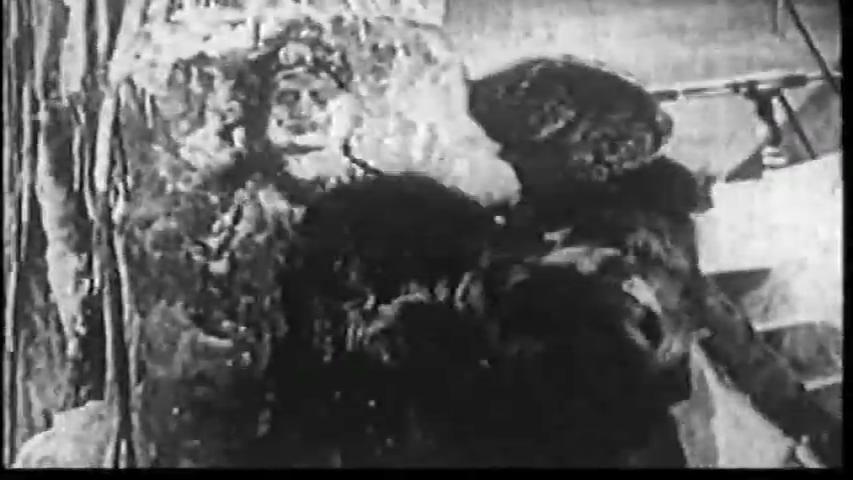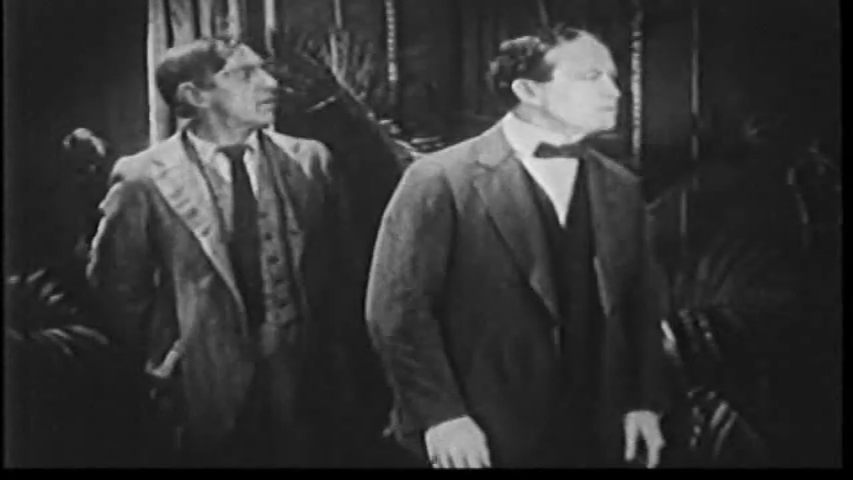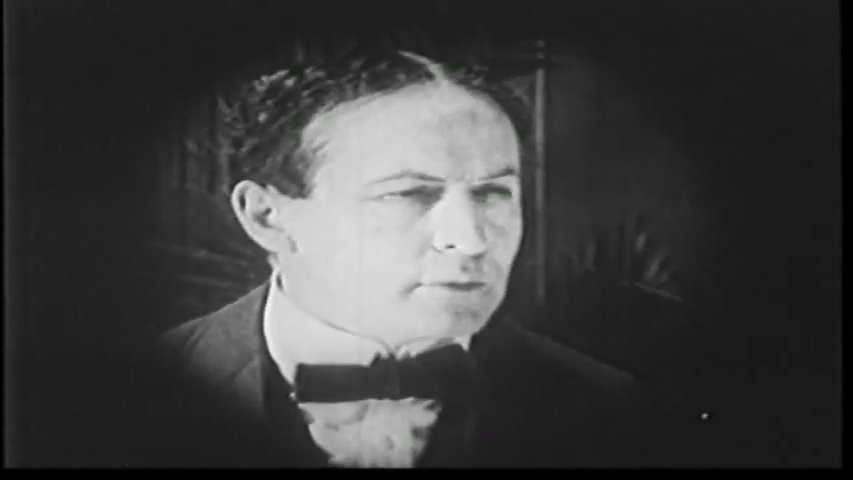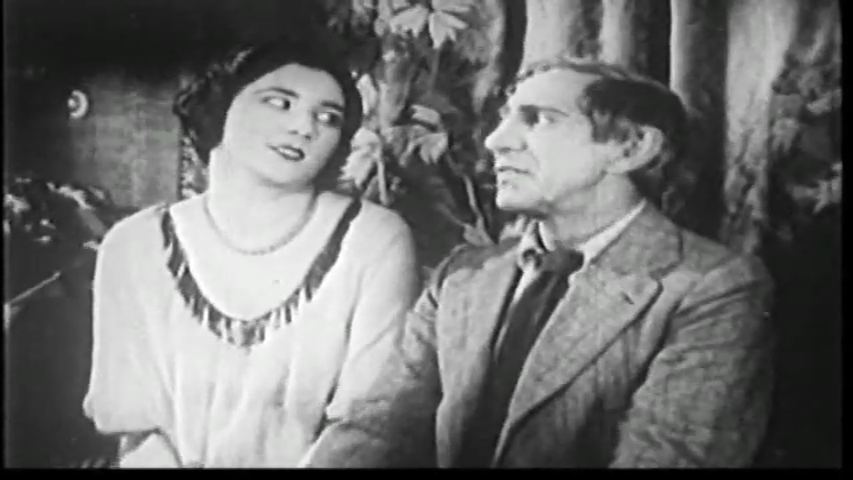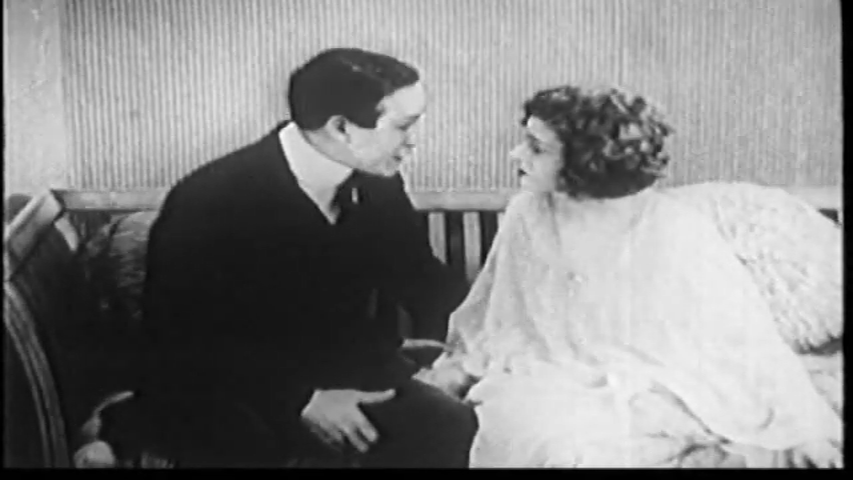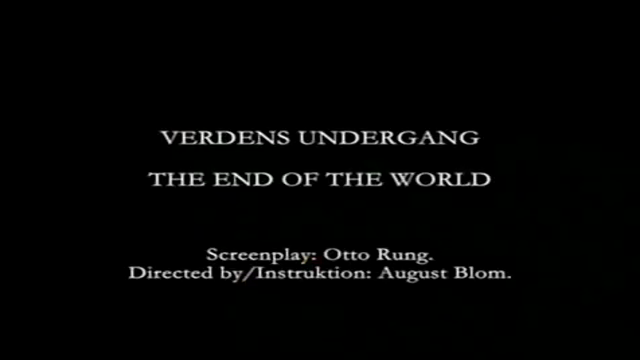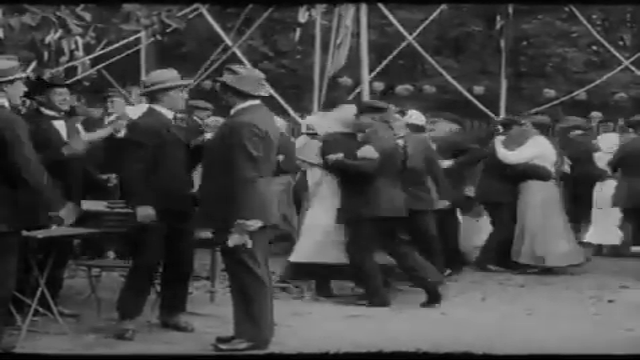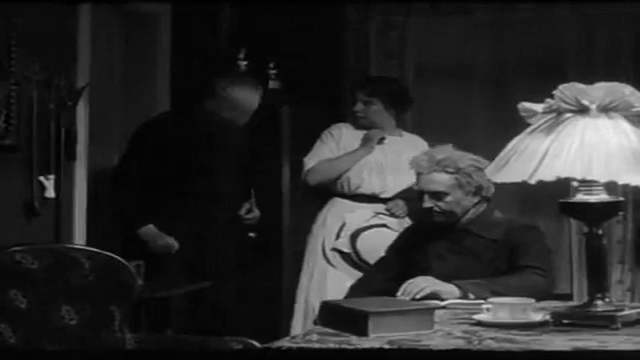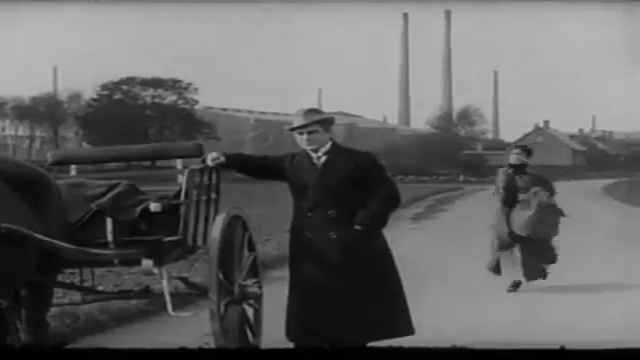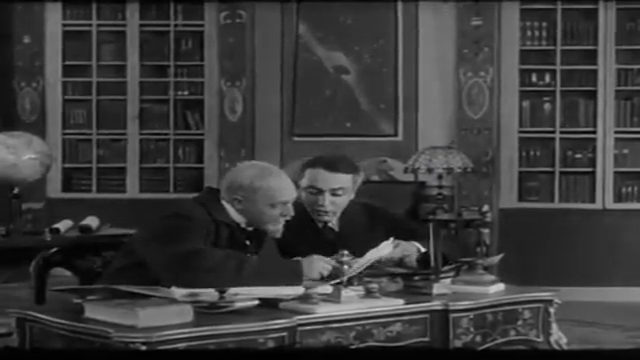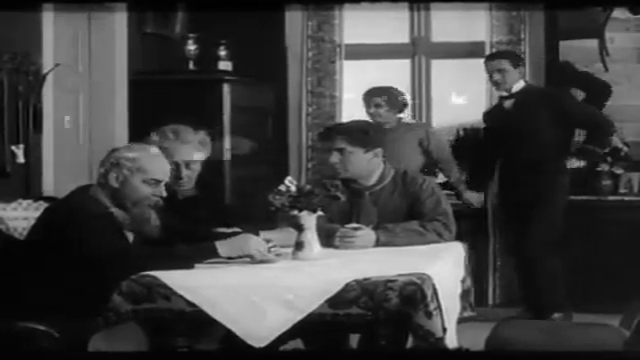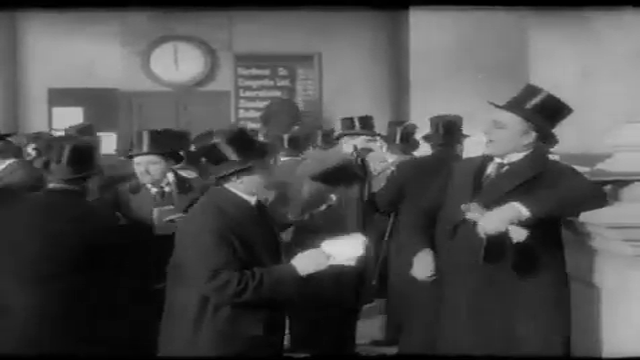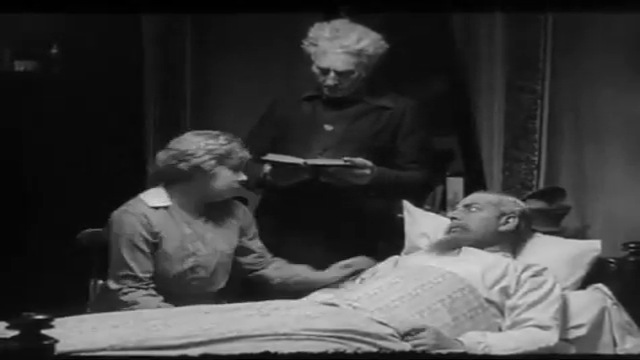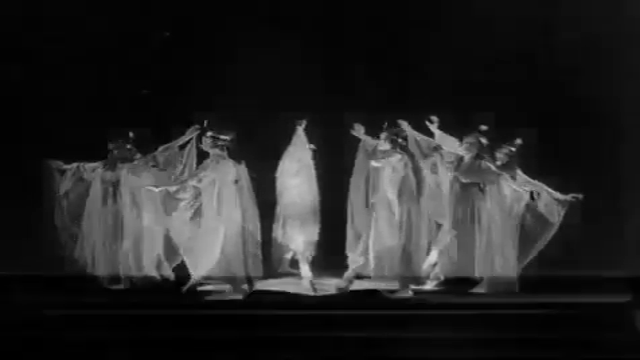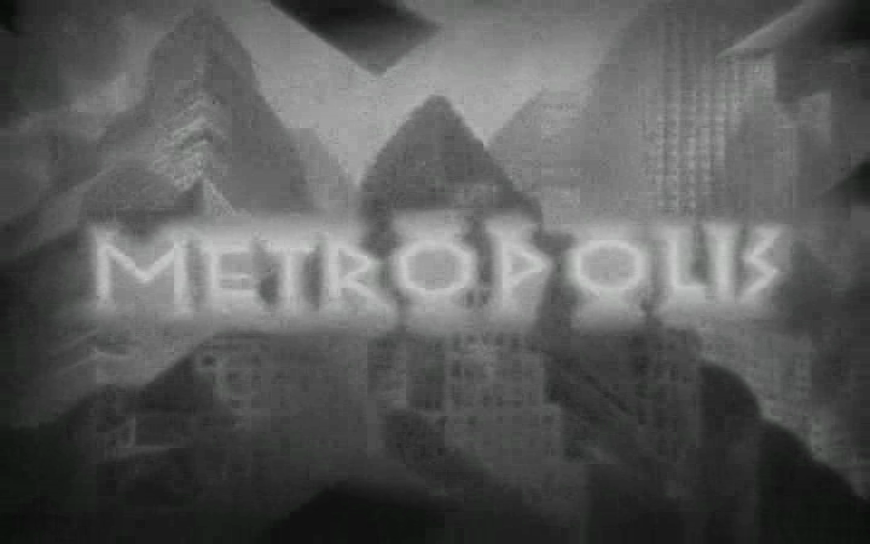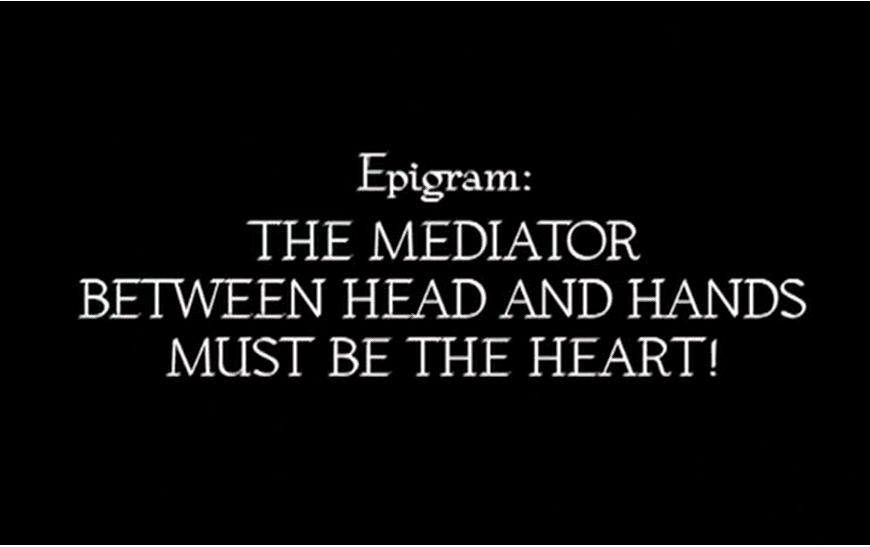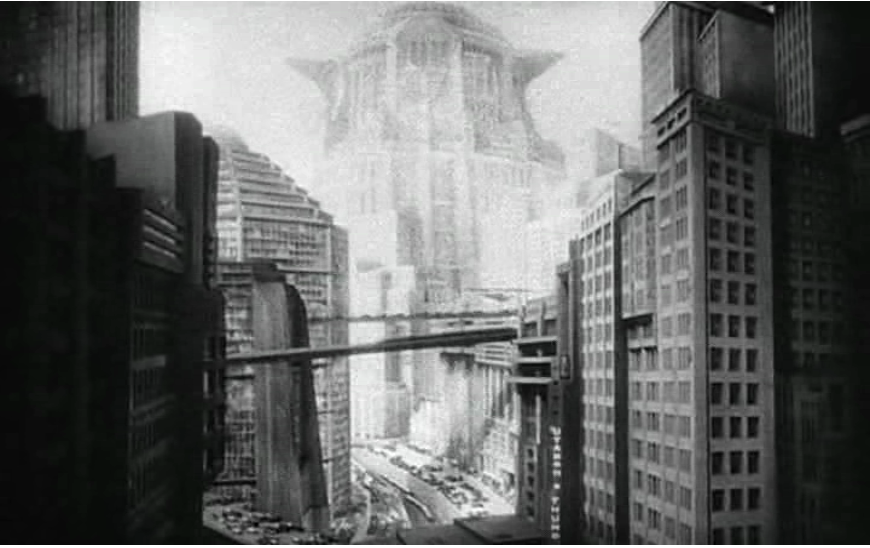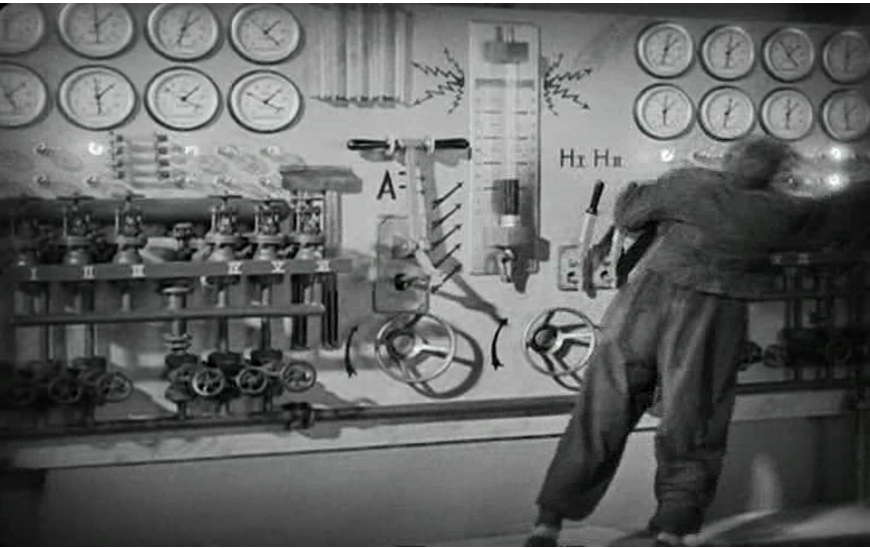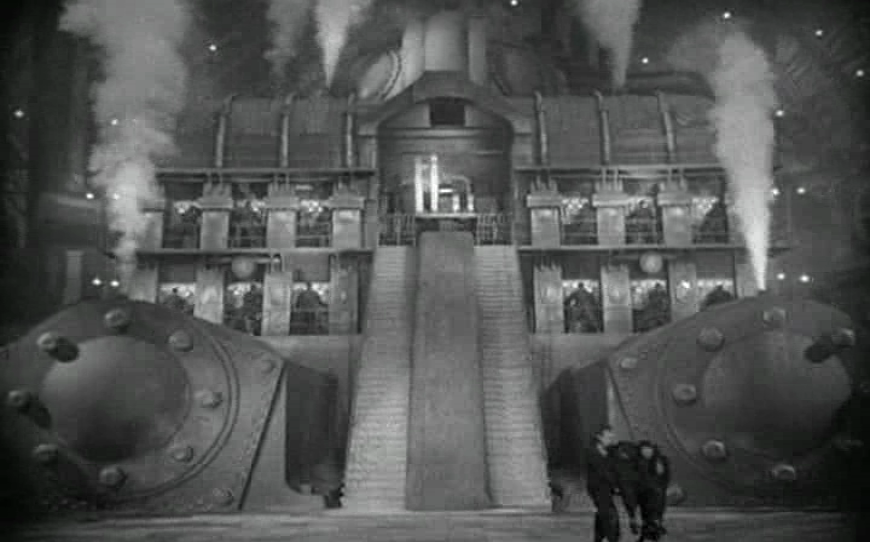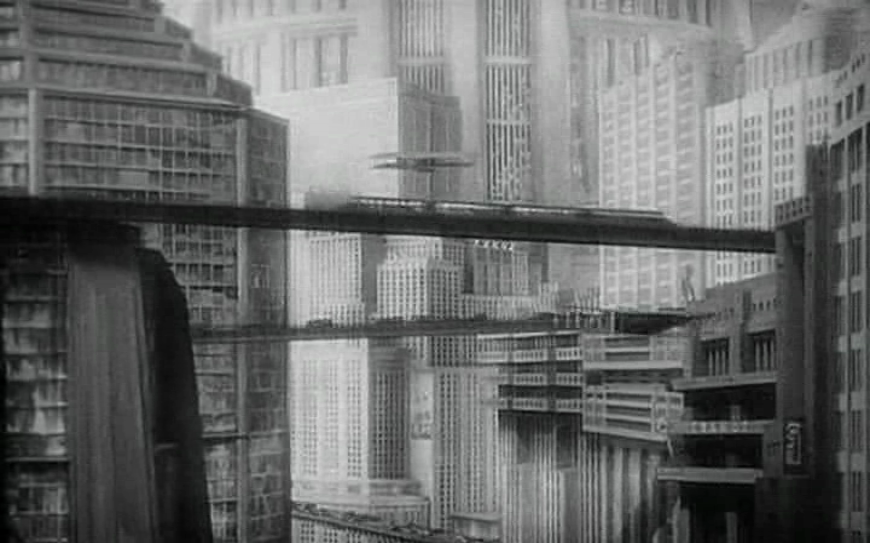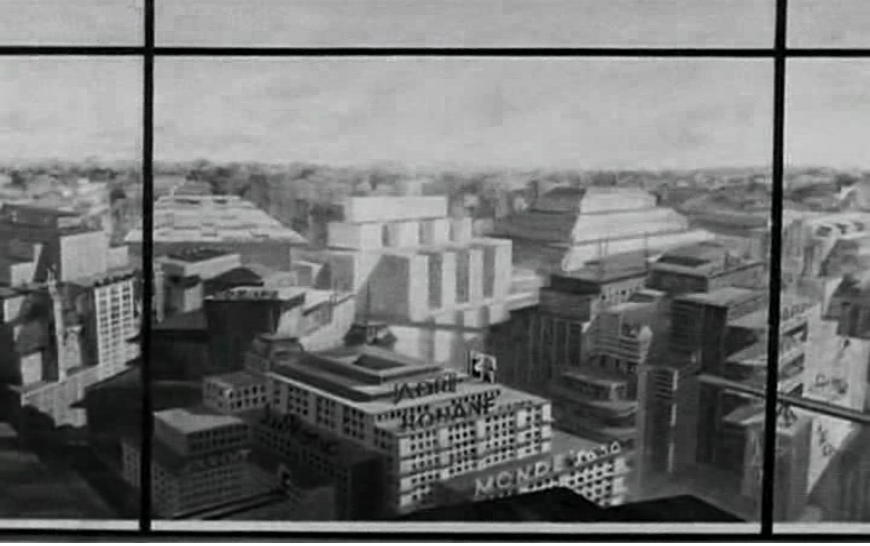-
#453 – Black Oxen (1923)
Black Oxen (1923)
Film review #453
Director: Frank Lloyd
SYNOPSIS: In New York high society, the appearance of a young woman named Mary Ogden who is the spitting image of a woman who has not been seen for thirty years after she left to marry in Austria. Her appearance causes a stir with the older members of high society, as they wonder how this woman can look exactly the same as a woman from thirty years ago. Lee Clavering, a member of the society, starts to take notice of her, which draws the scorn of Janet Oglethorpe, who desires Lee for herself. However, Mary has a dark secret that may drive Lee away forever…
THOUGHTS/ANALYSIS: Black Oxen is a 1923 silent film based on the book of the same name by Gertrude Atherton. The film is set in New York’s high society, where the most prominent members of society mingle in the theatres and the like. One night they notice a new lady, Madame Zittany, who is the exact image of Mary Ogden, who left to marry a count in Austria some thirty years ago. Her appearance causes quite a stir, with some believing her to be an illegitimate child of Mary’s. Lee Clavering, a member of this high society, starts to spend time with her and falls in love with her. The film is very much a romance film, but the mystery of Countess Zittlany provides an interesting twist to a typical story. It is very rare to see romance films blend with a more bizarre mystery, so it definitely stands out. The plot moves along at an even pace, probably helped by being based on a book. The themes of romance and high society contrasting with the more wild and free youth provides a good support to the mystery of the Countess, who is seen differently between the different generations.
The characters are well-defined and are recognisable by playing specific roles. Lee as the lead is described as being a “secret romantic” inside his disinterested exterior, leading to the women trying to get him to open up. He’s not particularly animated or interesting, but serves as a blank slate for male viewers to project themselves into I suppose. The women are by far the most interesting characters: The mysterious Countess has her mystery, but not much of a personality trait that is recognisable. Jane Oglethorpe is the elderly matriarch of the society, and represent some very traditional values, while Janet Oglethorpe, her granddaughter, represents the youth culture of partying and independence. The young people are referred to as “Flappers,” which isn’t a word you would hear nowadays, but probably still represents a similar divide between generations, which is pretty interesting to see in a film that is nearly a hundred years old. I think Janet particularly steals the show, as her chaotic actions really disrupt the norms of high society and add an element of unpredictability to a society that is mired in tradition and expectations. One particular moment when she refers to her grandmother and her associates as “tombstones” was genuinely funny, as you don’t really expect such an upfront performance in this era.
The science-fiction element of this film is part of the mystery of the Countess, who it turns out is actually Mary Ogden herself, rejuvenated through x-ray experiments and glandular surgery. It isn’t explained anymore than through images of a letter written to Lee confessing all of this to him, but this is a romance film rather than a sci-fi one. As mentioned, the film is based off a book of the same name that was both controversial and very popular. Maybe the idea of a woman altering her looks to look younger than she is was seen as deceptive, or maybe the “flappers” and their disregard for societal norms was frowned upon. Either way it does seem to be something that would have upset certain members of society. Mary’s reasons for undergoing this de-aging treatment aren’t personal, but rather to pretend to be her own daughter (when she in fact had none) to ensure the stability of Austria, as she married a Count there when she disappeared from New York thirty years ago. In pretending to be the descendent of herself and the Count would provide a sense of stability for the country. It’s a long-winded reason, but I think it’s meant to emphasise that she did not do this to simply look younger and re-live her youth, or steal eligible men, which is what her contemporaries seem to think.
The ending of the film is not available, but apparently it ends with Lee eventually marrying Janet instead of Mary, which the film doesn’t really set up from what I have seen. I don’t think the story is meant to “punish” Mary for her deception, but rather validate Janet’s free-spirited approach to life. Maybe that’s why the film is controversial in that it “rewards” Janet’s attacks on tradition with the hero (as far as marriage is the reward anyway). It’s obviously an old-fashioned film with it’s ideals firmly rooted in it’s time, but it’s also not scared to attack those traditions which is quite relatable today, and it shows that the gap between generations is pretty universal. Overall, Black Oxen is a decent silent film, with good acting, set designs, and a tight story that is clear despite it being silent. The performances are particularly strong and convey the specific personalities of all the characters very well. The sci-fi aspect raises some moral and ethical dilemmas, and it’s consequences are explored with enough detail to set the film apart from it’s contemporaries and make it quite memorable.
-
#409 – The Man from Beyond (1922)
The Man from Beyond (1922)
Film review #409
Director: Burton L. King
SYNOPSIS: An expedition finds a shipwreck frozen in the Arctic. On board, they find a man encased in ice. They begin to free him, and learn from the journals on the ship that the man was frozen over one hundred years ago in 1820. They decide to not tell him about this until they are ready to announce his discovery to the world. When the man is taken to the home of a scientist, he sees a woman being married that he believes is the same one he loved over one hundred years ago. Little does he know, he is interrupting an evil scheme undertaken by the man she is marrying…
THOUGHTS/ANALYSIS: The Man from Beyond is a 1922 film starring the famous escapologist Harry Houdini. At the start of the film, we see two men on an expedition in some frozen wastelands, when they stumble across a ship embedded in the ice. Dr. Sinclair, the head of the expedition, learns that the ship had been wrecked in 1820, over one hundred years ago through reading some of the journals on board. They find a man encased in ice who they are able to thaw out. The man wakes up and still believes he is in the year 1820, and Dr. Sinclair decides not to tell him how long he has been frozen until he is returned to civilisation where his discovery can be announced to the world. He is brought to the home of Dr. Sinclair by car…which is a bit odd considering that there were no cars in 1820, and so the man should probably have been suspicious about what was going on? Anyway, the man, Howard Hilary, sees that a wedding is going on between a man named Dr. Trent and a woman named Felice…who resembles the woman he loved before he was shipwrecked, also called Felice. Hilary interrupts the wedding believing the Felice he knew has abandoned him, but this Felice has no idea who he is.
The man Felice is to marry, Dr. Trent, is planning to marry her so he can get his hands on her Father’s property. Her Father, Dr. Strange (no, not the Marvel superhero) has been missing for nearly a year after he went along for the voyage, but apparently got a not saying his daughter was sick, and never returned home. The plot mainly revolves around Hilary attempting to stop Dr. Trent from marrying Felice and uncovering his evil scheme, while attempting to find her Father. I feel like the film could have done more with the premise of a man waking up after one hundred years. Instead, it focuses on a love story and an evil scheme that doesn’t really live up to what it could have been. The story is well put together, and the pacing is decent enough along with a varied cast of characters, but not enough attention is given to the novel premise of the film. Being a Houdini film, there are a few scenes of him performing some escape acts, and the finale being set on a raging river delivers some entertaining action that adds variety.
The film opens up showing a quote from the bible, which I assume is due to the whole theme of bringing someone back from the dead and reincarnation would have been controversial and heretic for a film at the same, so the film frames the events in this Christian way to avoid these accusations (which would be my guess anyway). Another interesting reason for this may be because the film was also a means for Houdini to restore his friendship with Sir Arthur Conan Doyle, the writer of the Sherlock Holmes stories. Doyle, while not particularly religious, was an enthusiast for Spiritualism, and wrote two books on the legitimacy of seances, communicating with the dead, ectoplasm and such forth. Houdini was a vocal sceptic of spiritualism, and the pair fell out during a seance where Houdini’s Mother was supposedly speaking from beyond the grave through a medium, and Houdini was enraged when the medium spoke in English, even though Houdini’s Mother only ever spoke and understood German. It seems to have had the desired effect, as Doyle praised the film and its message. Whether Houdini really changed his mind or not on spiritualism I’m not sure, but it’s an interesting story.
Overall, The Man from Beyond is a decent story for the time, with some good special effects and the expected Houdini escape feats. It’s messaging around reincarnation is a bit muddled however, and the unique premise of a man who has been frozen for over a hundred years having to adjust to ‘contemporary life’ isn’t really given any thought or focus. If you want a film which does that, the 1930 film Just Imagine! is probably one of the earliest examples.
-
#407 – The End of the World (1916)
The End of the World (1916)
Film review #407
Director: August Blom
SYNOPSIS: When it is discovered that a comet is due to pass by Earth, panic and uncertainty over whether the comet will actually strike the planet. Stoll, a stock broker, sees an opportunity to make some easy money preying on people’s fears, but when the danger becomes too real, he and his wife must return to the small mining town which she fled in order to marry Stoll…
THOUGHTS/ANALYSIS: The End of the World (Verdens Undergang, also sometimes titled The Flaming Sword) is a 1916 Danish science-fiction film. The film starts off with the inhabitants of a small mining town visited by the mine’s owner, Stoll. When Stoll meets Dina, the daughter of the mine foreman at a dance, he suggests that she run away with him back to the city. Following a chastising from her Father about being a “harlot” for staying out late on her own (such as it was in 1916 I guess), Dina decides to run away with Stoll, leaving behind her Sister, Father and her friend Flint, who had hopes of marrying her himself. Fast forward a few years and we see that Stoll is a successful financier whose stock market dealings have left him very rich, and his now wife Dina has everything she could ideally want. The beginning of the film really takes some time to establish the characters and their relations. Stoll is the focal point of much of the film, and while he is marked as the villain throughout much of what is going on, he is still portrayed as having some humanity in his faithfulness and dedication to his wife. Ultimately, his manipulation of the stock market and his treatment of the mine’s workers leave him as very much an enemy to many of the other characters. Being perhaps one of the first disaster movies ever, it does the job of portraying how the end of the world impacts a number of different people from different walks of life.
When Professor Wisemann sees a new comet through his telescope coming towards Earth, the discovery generates a lot of uncertainty and panic across the world, as no one seems to know if the comet will hit the Earth or not. Stoll learns from his brother that the comet will probably hit the Earth in northwest Europe and cause significant devastation, and devises a scheme to buy a large number of stocks while there is panic, and have his friend at a newspaper print the (false headline) that the comet will not hit, leading Stoll to sell his stocks at a higher price and become even more wealthy. Even when Stoll learns of the comet’s impact, he insists the newspaper print the misleading story that it will pass by Earth so he can fulfil his scheme. Again, Stoll is made out to be the villain because profiteering over the end of the world is hardly going to go down well is it? Meanwhile, events in the mining town are moving along as Dina’s sister says farewell to her sweetheart Reymers, who has just graduated as a sailor and is leaving on board a ship.
In the third act, with the comet looming ever closer to Earth, Stoll realises the only place he can take shelter is the mine in the town where he met Dina: however, the populace are less than happy at Stoll over the way he has treated their town, and when they learn he is coming to town, Flint organises an attack on Stoll. Dina is also reluctant to return to the town, but is finally convinced. As the comet gets closer, Stoll organises a party for the end of the world, while the workers decide they are going to storm the party, setting the conflict for the final part of the film. As the comet enters the atmosphere, fragments start to rain down over the town causing mass destruction. The special effects are quite remarkable for their time, even if they’re typically just sparks flying over model buildings. Also the image of a comet overlaid into the sky of some scenes gives a feeling of impending doom. The film enjoyed a fair amount of success when it was released; in part capitalising on the fear and uncertainty surrounding Halley’s comet passing Earth a few years before, and the ongoing war in Europe which alerted people to a level of destruction they had never considered before. The film’s showing of mass destruction from meteors, houses being shaken and destroyed, and huge tidal waves gives a fair variety to the devastation and gives the feeling that nowhere is safe in these situations.
The film ends with most of the characters dying: Stoll and his wife are killed in the mine they are hiding in, Flint chases them, but the release of deadly gas kills him too. Dina’s Father passes away, and at the end we see Edith, Dina’s sister alone as she has miraculously survived. She goes up to the top of the church and rings the bell in the hope of alerting other survivors. Coincidentally, it turns out Reymers has managed to return to shore from the ship he was on, and on hearing the bell, the two are reunited to end the film on a somewhat happy note, that even through all the destruction, a sliver of hope has survived. Overall, The End of the World is a well-written spectacle that offers effects and a speculative scenario that film-goers would probably have not seen before. It’s relevance to the time is clear in regards to the amount of destruction the world was experiencing through war. The film does a good job of establishing a variety of characters and connecting them to each other, as we see how the disaster will affect people of different class and occupation, which has become one of the foundations for disaster movies. The spectacle would have engrossed movie-goers of the time, but there’s enough substance in the characters to appreciate the story underneath the spectacle too.
-
#4 – Metropolis (1927)
Metropolis (1927)
Film review #4
Dir. Fritz Lang
Widely regarded as the one of the most important science-fiction films, and most certainly one of the first. Metropolis is A silent German expressionist movie that tells the story of a dystopia that has a deep divide between the working class of the so-called “undercity”, and the upper class who live above ground. The sets and design of the city seems to be influenced by the artists movements of the time, such as modernism and futurism (This is true especially in terms of the cars). When this film was released in 1927, it should be noted that the world’s population had no real concept of technology and architecture on the scale that this film shows, so seeing it back then must have been a truly unique experience.
The film also delves into some religious iconography too. With numerous scenes taking place in abandoned cathedrals and catacombs, long since abandoned as obviously technology has overcome the idea of a God, and secured man’s triumphant victory over the notion of any deity. The ideas of the “mediator of the hand and head being the heart” is an interesting concept that is explored too., and perhaps serves as a warning about how much power we as a species should submit to technology, as it might not be worth the cost to our humanity…
The plot generally centres around the privileged son of the leader of “Metropolis”, and as we see him travel around the city, we see the differences in the classes is very apparent, and the upper and lower classes seem to lead completely different lives. For example, the Lower classes never see the sky as they live so far underground. The upper classes themselves are not taught about the lower classes, and their existence is barely acknowledged. But perhaps the most interesting difference to me is the concept that the working class do ten hour shifts and the clocks in the undercity only going up to ten was something I found pretty interesting: Different classes having different time structures…very intriguing. Perhaps you might think that the issue of class and division is something that has been addressed in cinema so many times it is nothing special, but you have to remember that Metropolis was one of the first films to address such concerns.
Metropolis was also one of the first films to utilise the concept of a human-like robot. This machine can copy a humans features exactly, and plays a key part in the plot of the movie. Just another example if the blurring of the boundaries between humans and technology.
If you think some of those images seem familiar, you may be right. The music video for Queen’s “Radio Ga Ga” uses footage from the film, and the singer Madonna’s song “Express Yourself” is written about this movie too.
So overall, I would highly recommend watching Metropolis if you have any interest in the history of science-fiction or cinema in general. It has a lot of firsts for cinema, and sets the benchmark for science-fiction story telling. Perhaps a two-and-a-half hour silent film is not everyone’s idea of a good movie, but what it accomplished at the time of release set itself apart from everything else, and no doubt has influenced cinema and science-fiction to this very day.
